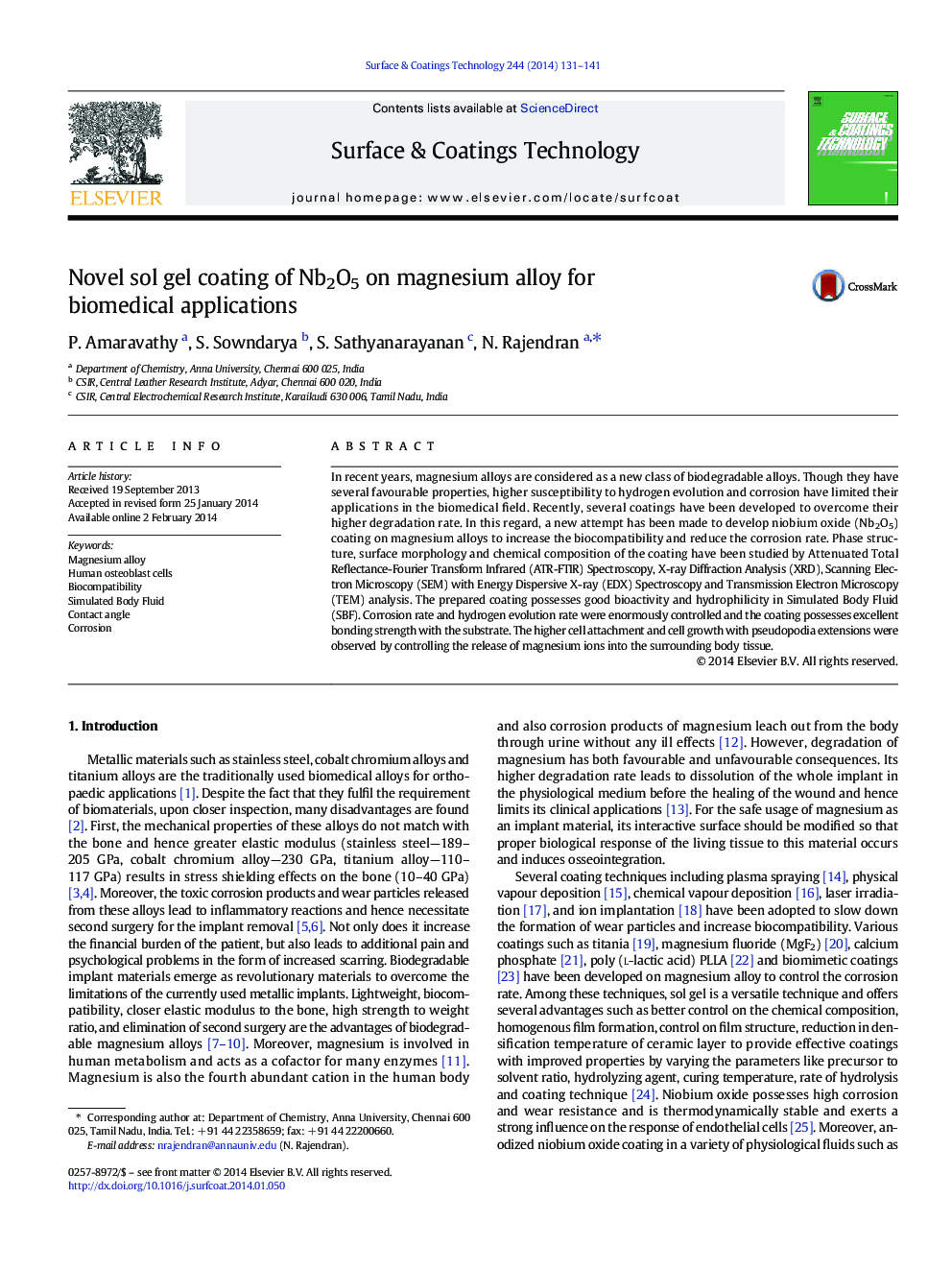| Article ID | Journal | Published Year | Pages | File Type |
|---|---|---|---|---|
| 8028030 | Surface and Coatings Technology | 2014 | 11 Pages |
Abstract
In recent years, magnesium alloys are considered as a new class of biodegradable alloys. Though they have several favourable properties, higher susceptibility to hydrogen evolution and corrosion have limited their applications in the biomedical field. Recently, several coatings have been developed to overcome their higher degradation rate. In this regard, a new attempt has been made to develop niobium oxide (Nb2O5) coating on magnesium alloys to increase the biocompatibility and reduce the corrosion rate. Phase structure, surface morphology and chemical composition of the coating have been studied by Attenuated Total Reflectance-Fourier Transform Infrared (ATR-FTIR) Spectroscopy, X-ray Diffraction Analysis (XRD), Scanning Electron Microscopy (SEM) with Energy Dispersive X-ray (EDX) Spectroscopy and Transmission Electron Microscopy (TEM) analysis. The prepared coating possesses good bioactivity and hydrophilicity in Simulated Body Fluid (SBF). Corrosion rate and hydrogen evolution rate were enormously controlled and the coating possesses excellent bonding strength with the substrate. The higher cell attachment and cell growth with pseudopodia extensions were observed by controlling the release of magnesium ions into the surrounding body tissue.
Keywords
Related Topics
Physical Sciences and Engineering
Materials Science
Nanotechnology
Authors
P. Amaravathy, S. Sowndarya, S. Sathyanarayanan, N. Rajendran,
